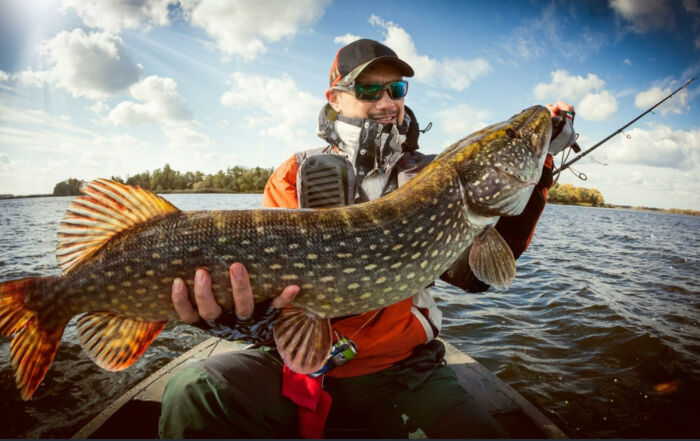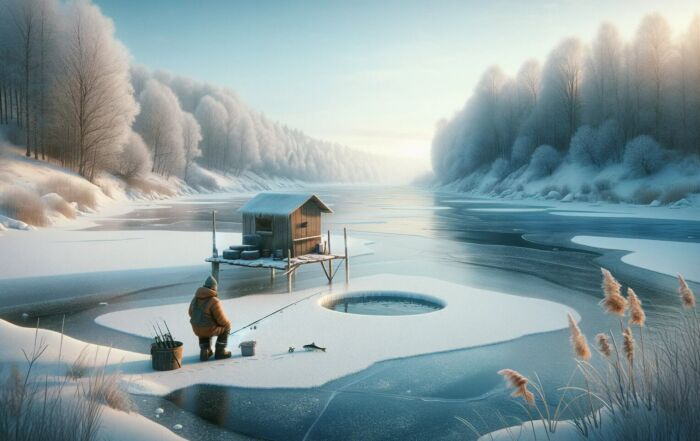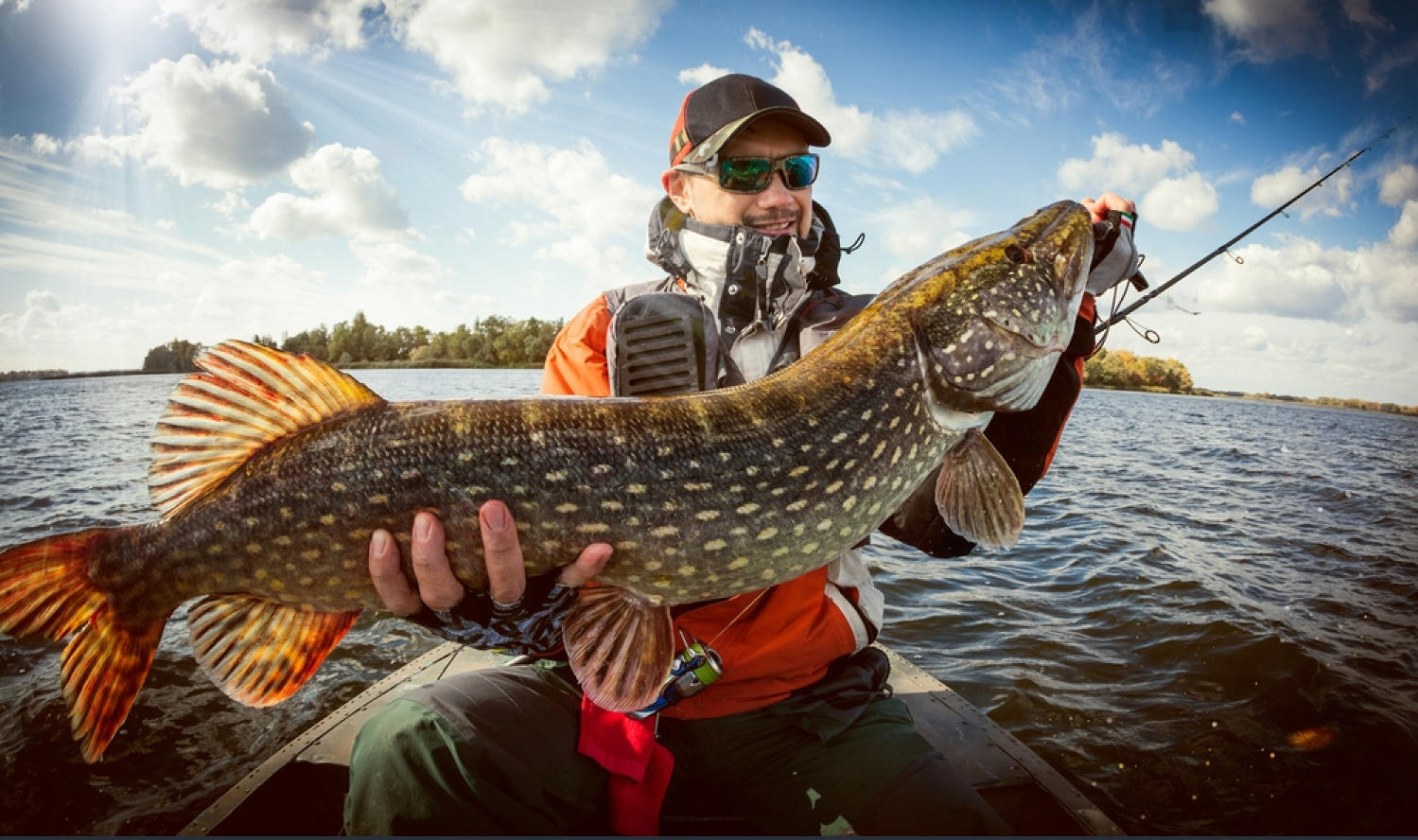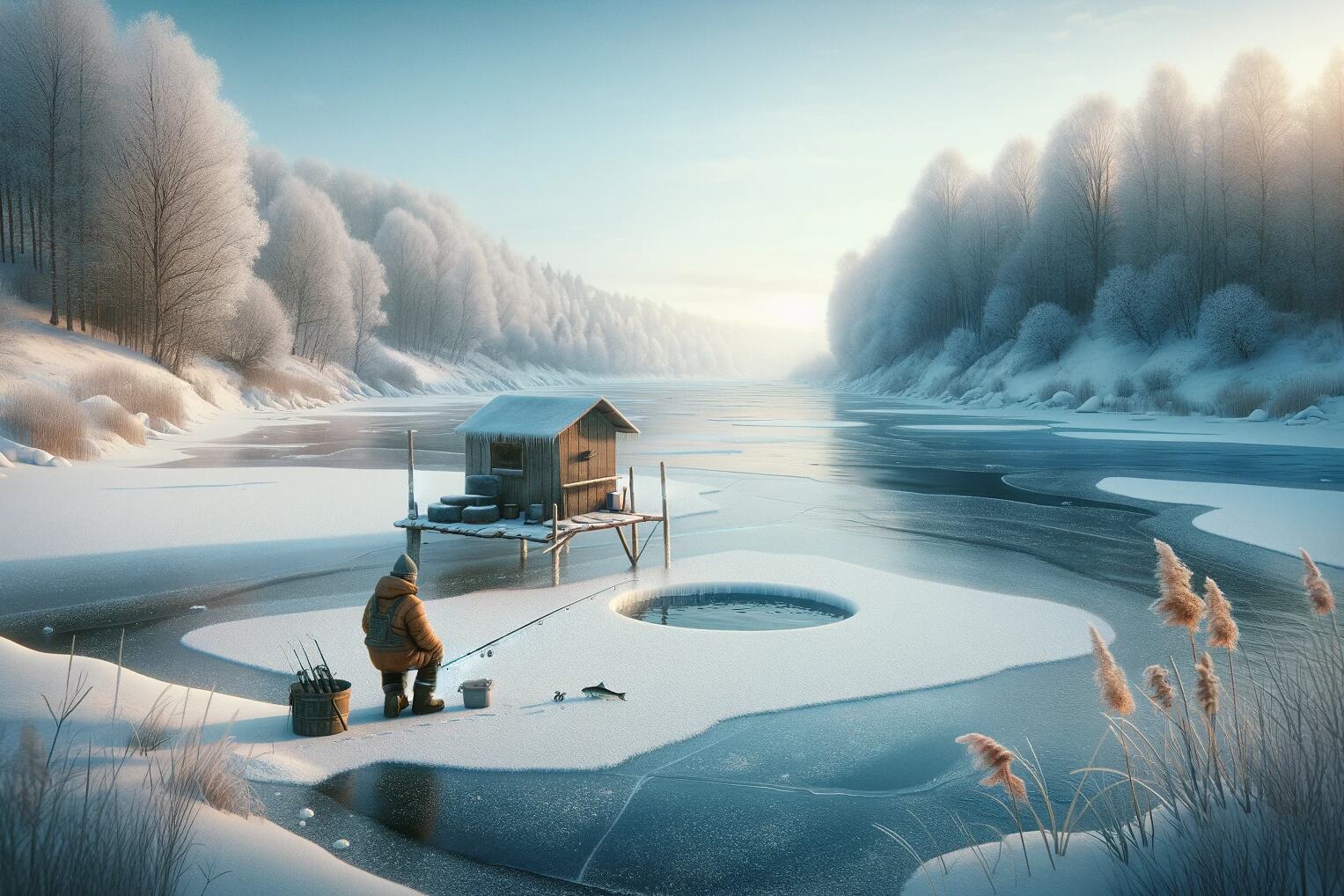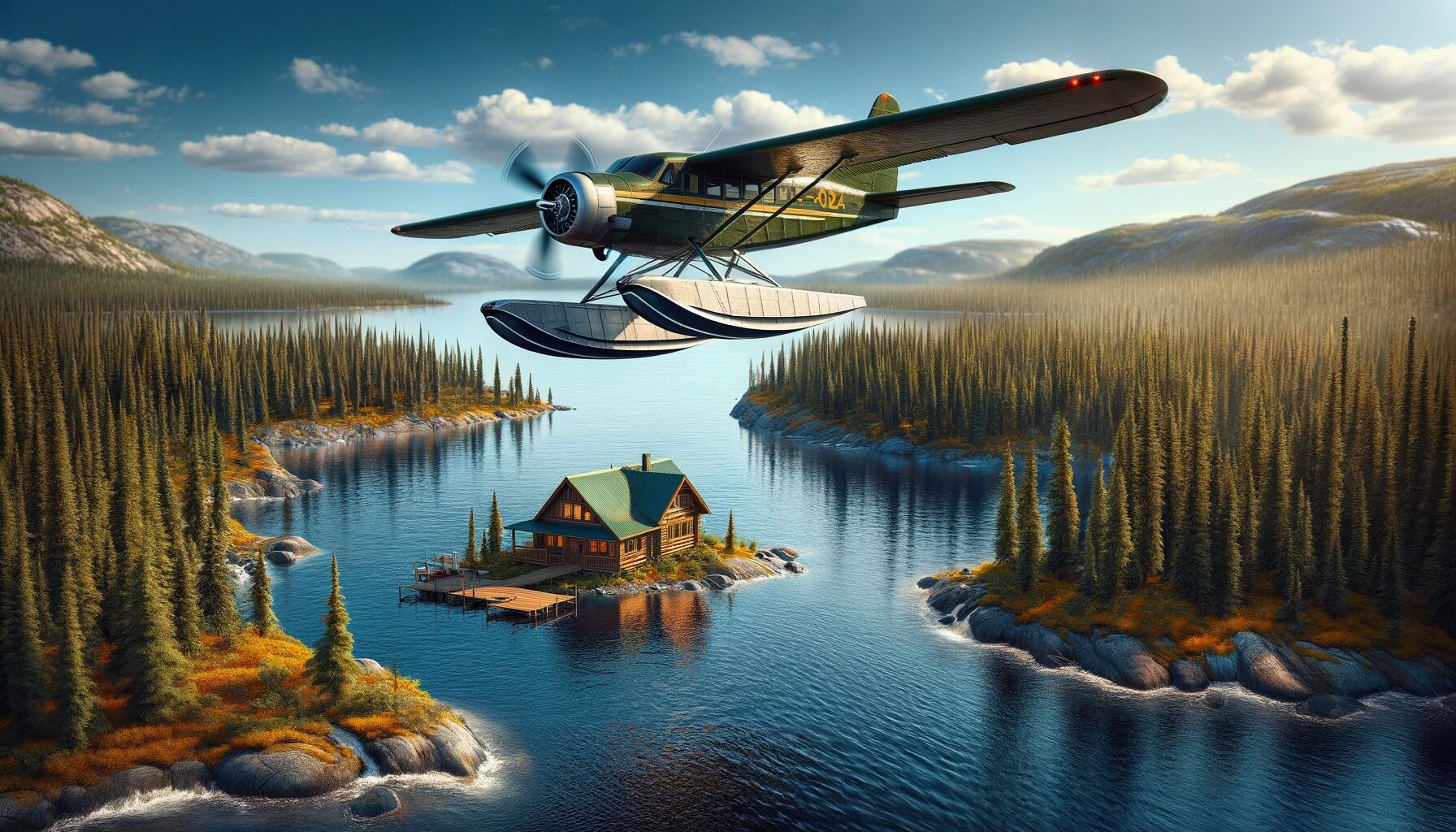Fly Fishing Introduction

Biology and Behavior of Northern Pike
Northern pike (Esox lucius) is a freshwater fish species native to the Northern Hemisphere. They are found throughout much of Canada and many parts of the United States, Europe, and Asia. Northern pike is known for their long, torpedo-shaped bodies, green and yellow scales on their backs, and white bellies. In addition, they have a large, duckbill-like mouth full of sharp teeth, which they use to ambush their prey.
Northern pike is apex predators in their ecosystems known for their voracious appetites. They will eat almost anything they can catch, including other fish, frogs, crayfish, small mammals, and birds. Because of their predatory nature, anglers often target northern pike for a challenging and exciting catch.
Northern pike can grow to enormous sizes, with the largest recorded specimen weighing over 60 pounds. However, most northern pike anglers’ catch will be much smaller, usually between 20 and 30 inches long. Northern pike spawns in the spring, with males and females gathering in shallow waters to lay their eggs. The eggs hatch within a few weeks, and the young pike begins to feed on small insects and other invertebrates.
Where to Find Northern Pike

When fly fishing for northern pike, looking for areas with suitable habitats is important. This includes weed beds, submerged logs, and other types of cover. Northern pike are also more active in cooler water temperatures and may be more active in the early morning or late evening.
Gear for Fly Fishing for Northern Pike
Fly fishing for northern pike requires specialized gear designed to handle the size and strength of these fish. Here are the essential pieces of equipment you’ll need to get started:
- Fly Rod: A 9-foot, 8- or 9-weight fly rod is ideal for fly fishing for northern pike. This will give you the casting distance and power to handle larger flies and fight these hard-fighting fish.
- Fly Reel: A large-arbor fly reel with a smooth drag system is essential for fly fishing for northern pike. Look for a reel that can hold at least 200 yards of 30-pound backing.
- Fly Line: A floating or intermediate sinking fly line is ideal for fly fishing for northern pike. Look for a line with a weight-forward taper that can help you cast large flies and turn them over in the water.
- Leader and Tippet: A 9-foot, 20-pound test fluorocarbon leader with a shock tippet of 40- to 50-pound test is ideal for fly fishing for northern pike. This will give you the strength to handle these hard-fighting fish and prevent them from breaking off.
- Flies: Northern pike is a predatory fish and will go after large, brightly-colored flies that imitate their prey. Some popular fly patterns for northern pike include streamers, deceivers, and bunny leeches. It’s also a good idea to have a variety of colors in your fly box, as northern pike can be picky eaters and may prefer one color over another on any given day.
- Waders: Waders may be necessary to keep you dry and comfortable, depending on the water you’ll be fishing. Look for durable and breathable waders with reinforced knees and neoprene booties.
- Polarized Sunglasses: Polarized sunglasses are essential for fly fishing, as they can help you see through the glare on the water’s surface and spot fish that may be hiding in the weeds.
- Landing Net: A landing net is helpful for safely landing and releasing your catch. Look for a net with a large hoop and a deep basket that can accommodate larger fish.
Fly Fishing Techniques for Northern Pike
Fly fishing for northern pike requires a different approach than fishing for other species. Because the northern pike is a predatory fish that rely on ambushes to catch their prey, it’s important to present your fly in a way that mimics the movement of their prey. Here are some techniques to try when fly fishing for northern pike:
- Slow Stripping: When fishing with streamers or other large flies, try stripping your line slowly and steadily to imitate the movement of a wounded fish. This can be an effective way to trigger a strike from a northern pike that is hiding in the weeds.
- Stop-and-Go: Another effective technique is to strip your line in short, quick bursts, then pause for a few seconds before repeating. This can imitate the movement of a baitfish trying to escape from a predator.
- Jerking: Some anglers have success with a jerking motion, where they jerk the fly rod sharply to create a sudden movement in the fly. This can mimic the action of a struggling fish and can be especially effective when fishing in deep water.
- Topwater Fishing: Northern pike will sometimes feed on surface insects, so it’s worth trying a topwater fly like a popper or gurgler. Cast your fly near weed beds or other areas with cover, then give it a quick pop to create a commotion on the surface.
- Drifting: If fishing in a river or stream, try drifting your fly downstream on a sinking line. This can effectively cover a lot of water and find where the fish are holding.
Tips for Catching Northern Pike
- Be Patient: Northern pike can be elusive and may take some time to find. Be patient and persistent, and be bold and try different techniques and locations.
- Use the Right Gear: Make sure you have the right gear for the job, including a strong rod, reel, and line, as well as a selection of flies that mimic the prey of the northern pike.
- Be Stealthy: Northern pike are easily spooked, so it’s essential to be quiet and move slowly when approaching the water. Also, use caution when wading in shallow water, and try to cast from a distance if possible.
- Set the Hook: When you feel a strike, set the hook firmly to ensure the fish is hooked. Northern pike have hard mouths, so it can take a solid hookset to get the fly to penetrate.
- Handle with Care: Northern pike are a valuable resource, so handling them carefully and releasing them unharmed whenever possible is essential. Use a landing net to safely remove the hook and keep the fish in the water as much as possible to avoid stressing it.
- Practice Catch and Release: Catch and release is a great way to preserve the northern pike population and ensure that future generations can enjoy fly fishing for these incredible fish. Handle the fish carefully, release them quickly, and gently back into the water.
- Observe Fishing Regulations: Always check the fishing regulations for the area you’ll be fishing in and follow them carefully. This can include limits on the number or size of fish that can be kept and restrictions on fishing methods or gear.
Best Places to Fly Fish for Northern Pike
Northern pike can be found in a variety of habitats, from small streams to large lakes and rivers. Some of the best places to fly fish for northern pike include:
- Canada: Canada is known for its incredible northern pike fishing, with many lakes and rivers teeming with these powerful fish. Some popular destinations for fly fishing for northern pike in Canada include Manitoba, Saskatchewan, and the Yukon Territory.
- Minnesota: Minnesota is home to a large population of northern pike, with many lakes and rivers providing excellent fly fishing opportunities. Some popular destinations for fly fishing for northern pike in Minnesota include Lake Vermilion, Mille Lacs Lake, and the Mississippi River.
- Wisconsin: Wisconsin is another great destination for fly fishing for northern pike, with many lakes and rivers offering excellent fishing opportunities. Some popular destinations for fly fishing for northern pike in Wisconsin include Green Bay, the Fox River, and Lake Winnebago.
- Alaska: Alaska is known for its incredible fishing opportunities, and the northern pike is no exception. Some popular destinations for fly fishing for northern pike in Alaska include the Kenai River, the Copper River, and Lake Iliamna.
- Montana: Montana is home to various fish species, including northern pike. Some popular destinations for fly fishing for northern pike in Montana include Yellowstone River, Missouri River, and Flathead Lake.
Conclusion
Fly fishing for northern pike can be a thrilling and rewarding experience, with these powerful fish providing a challenge for even the most experienced anglers. However, by using the right gear, techniques, and approach, you can increase your chances of catching these elusive fish and enjoy the beauty and excitement of fly fishing in some of the most stunning natural habitats in the world.
Remember always to follow fishing regulations, practice catch and release, and carefully handle these valuable fish to ensure their continued survival and enjoyment for generations. Happy fishing!

